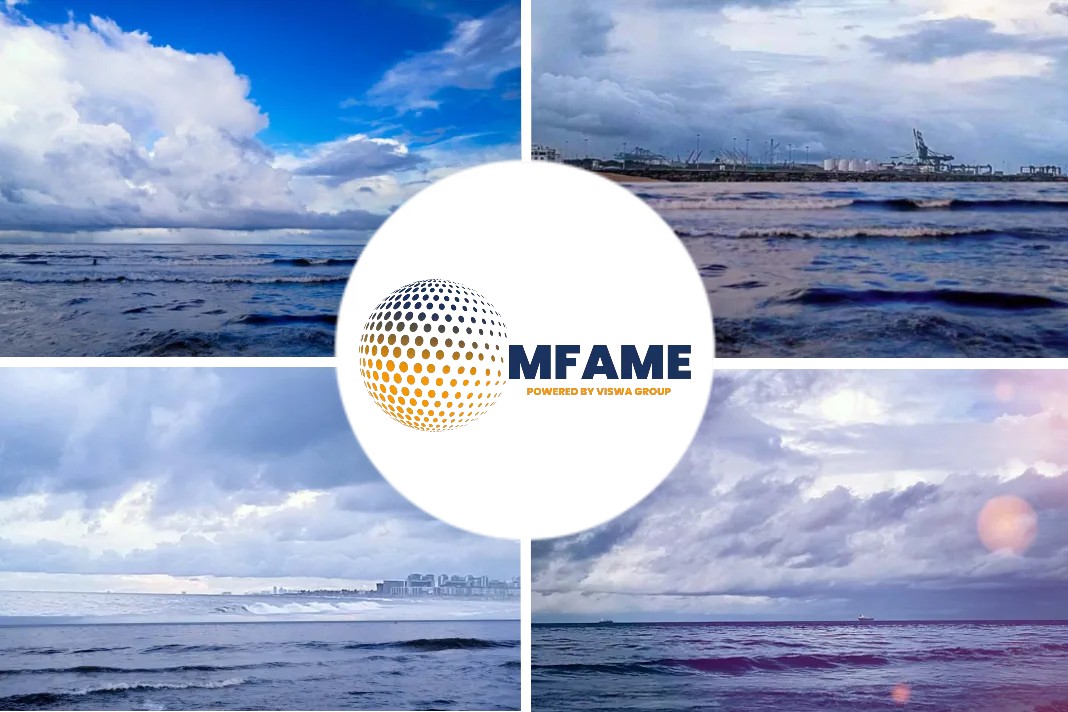Mitsui O.S.K. Lines, Ltd. (MOL; President & CEO: Takeshi Hashimoto; Headquarters: Minato-ku, Tokyo) and its group company MOL Ferry Co., Ltd. (President: Naotoshi Omoto; Headquarters: Chiyoda-ku, Tokyo) today announced orders for construction of two cutting-edge LNG-fueled ferries, says a press release published on their website.
Deal with NZC
MOL signed a deal with Naikai Zosen Corporation (President: Kosaku Hara; Headquarters: Onomichi-shi, Hiroshima Prefecture) to build the two ferries. The vessels are slated for delivery in 2025 and will replace two vessels that MOL Ferry currently operates on the Oarai-Tomakomai route.
35% reduction in Co2 emission
The MOL Group is currently building Japan’s first two LNG-fueled ferries, “Sunflower Kurenai” and “Sunflower Murasaki”, entering service in 2023, and with the addition of these two new vessels to be ordered this time, the MOL Group will lead the industry in terms of environmental responsibility.
The new ferries will reduce CO2 emissions by about 35% in comparison with ferries currently in service, by adopting the latest technologies. The MOL Group will reduce environmental impact by introducing the next-generation super eco ferries.
Three main characteristics of ferries
1. Use of LNG fuel
Compared to conventional marine fuel oil, LNG is expected to reduce emissions of carbon dioxide (CO2) by about 25%, sulfur oxide (SOx) by virtually 100%, and nitrogen oxide (NOx) by about 85%, allowing for a significant reduction of vessels’ environmental impact.
2. Adoption of the latest technologies
The new ferries adopt the “ISHIN” ship design, which features a streamlined shape with an aerodynamically rounded the bow and can use diagonal headwinds to help propel the vessel. These ferries will be also equipped with high-performance, high-efficiency engines. In addition, new technologies such as energy-saving devices developed by Naikai Zosen have been incorporated to further reduce CO2 emissions.
3. Response to Modal Shift
As the number of trucks is expected to increase due to the acceleration of Modal Shift, all cabins will be private, offering additional comfort not only for passengers but also for long-distance truck drivers. MOL Group will contribute to reducing CO2 emissions by supporting Modal Shift.
MOL Group Environmental Vision 2.1
The MOL Group set the target, “With the concerted effort throughout the Group, achieve net-zero GHG emissions by 2050” in “MOL Group Environmental Vision 2.1”. It is promoting the wider adoption of LNG fuel through the development and advancement of an LNG fuel supply system in Japan and overseas.
It also plans to launch about 90 LNG-fueled vessels by 2030 as an initiative to introduce clean alternative fuels. The group will develop technology for LNG-fueled vessels and safe operation through the development, construction, and operation of the new ferries, and take an active stance in fostering the use of LNG fuel.
The MOL Group is united in working to meet the needs of customers and society at large for a cleaner environment and the realization of a low- and decarbonized society.
Spray tearing plate
Naikai Zosen launched the development of an energy-saving device called the “Spray Tearing Plate,” which will be installed on the new ferries to further boost energy efficiency to improve energy-saving technology.
With this order for new LNG-fueled ferries, which are the first LNG-powered ferries for Naikai Zosen, the company aims to win additional orders for eco-friendly LNG-fueled coastal ferries and RoRo ships and will contribute to ocean transport as a shipyard that can build vessels to deliver advanced environmental performance.
Did you subscribe to our daily Newsletter?
It’s Free! Click here to Subscribe
Source: MOL






















